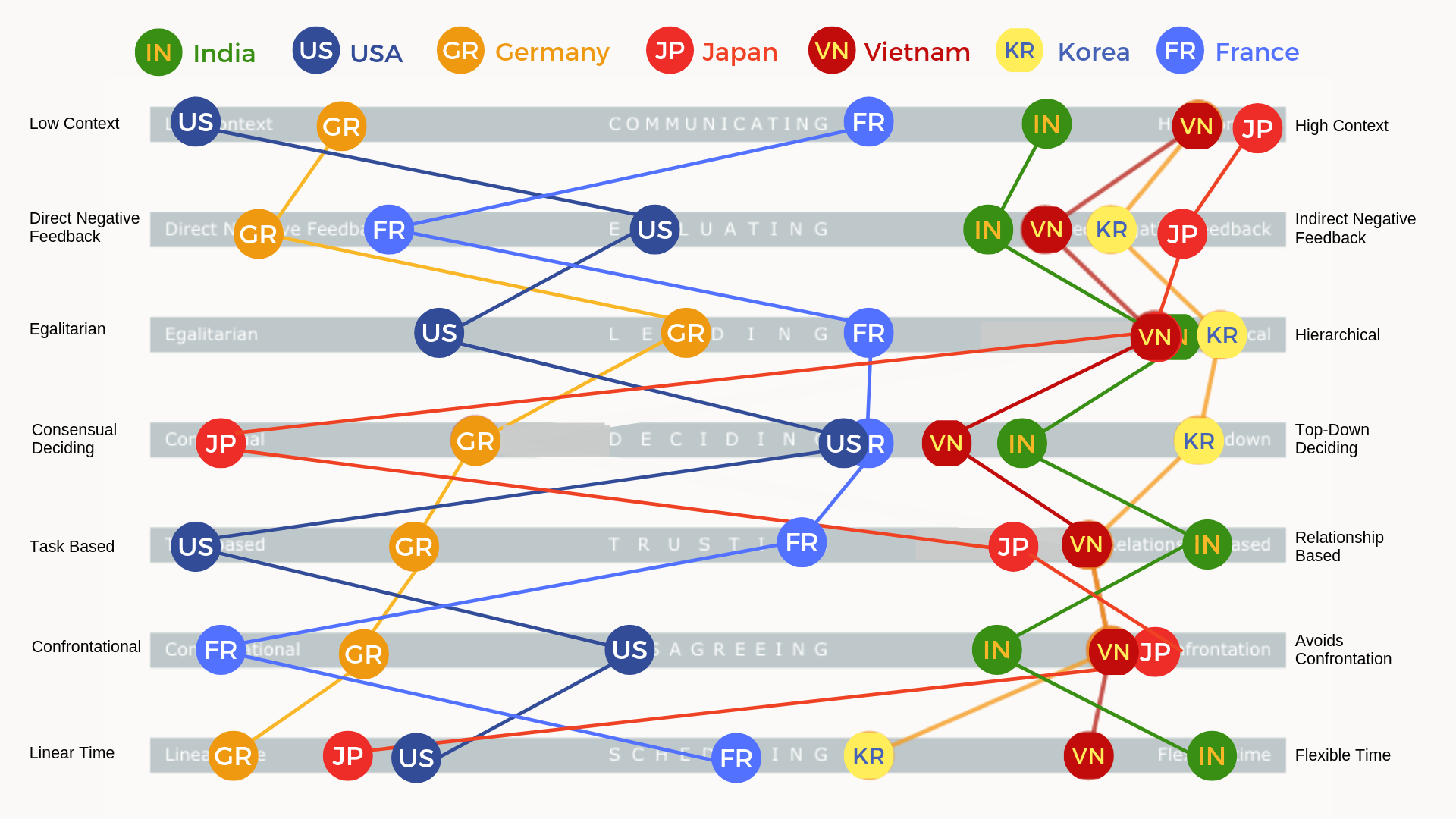Managing Conflict in a Multi-Cultural Environment by Paula Brunning
by Paula Brunning
Counsellor / Career Coach / Parenting Coach
Managing Conflict in a Multi-Cultural Environment
Navigating conflict is not an easy task. Add a multicultural dimension to it makes it even harder to manage. Counsellor & Career Coach Paula Brunning discuss how you can successfully manage conflicts in a multicultural environment.
Conflict has been on my mind recently. As normal as it is to have conflict in our lives, few of us handle it well. And there have been a few instances in my circle of acquaintances where people have been quite hurt. I have previously written about the empathy response which is of tremendous value in connecting to someone else’s feelings as a bridge to understanding, even in disagreements. Today, I want to step into the idea that culture can impact how we understand and approach conflict.
For many of us, we find ourselves working and living in a multicultural context and I wonder how prepared we are to deeply understand how to work effectively together. In personal relationships, cultural differences can emerge as a key area of conflict, despite all the respect of love that may be present. Workplaces bring together employees from various cultural backgrounds and may or may not support cultural awareness training. While this diversity is a strength, it can also lead to misunderstandings and conflicts that, if left unresolved, can negatively impact team dynamics, productivity, and overall organizational success. Effectively managing conflict in a multi-cultural environment is, therefore, a crucial skill for each of us to develop.
This short article will introduce practical ways we can improve cross-cultural communication to manage conflict more effectively, using insights from the book "The Culture Map" by Erin Meyer.
The Culture Map
The Culture Map by Erin Meyer provides a comprehensive framework for understanding and navigating the cultural differences that impact how we communicate and work together across borders. By exploring eight key cultural dimensions, the book offers practical guidance on bridging these gaps to foster more effective cross-cultural collaboration and conflict resolution.
Communication Style
One crucial dimension addressed in the book is communication style. Some cultures, like the US and UK, tend to have a more direct, "low-context" communication approach, where the meaning is explicitly conveyed in the words themselves. In contrast, many Asian and Latin American cultures practice "high-context" communication, where the subtext, tone, and nonverbal cues carry a significant portion of the intended meaning. Recognizing and adapting to these differences can prevent misunderstandings and resentment during cross-cultural interactions.
For example, when providing feedback or critiquing work in a high-context setting, it's important to be more indirect and nuanced, focusing on the positive aspects first before gently introducing areas for improvement. Conversely, in a low-context culture, being overly indirect or "beating around the bush" may be seen as evasive or ineffective. By calibrating our communication style to match the preferences of our audience, we can have more productive, conflict-free dialogues. Within a multi-cultural workplace setting, we may need to develp and utilize both styles depending on who we are dealing with and when.
Emotional Expressiveness
Another key dimension is the concept of "emotional expressiveness." Some cultures, like Italy and France, tend to be more emotionally expressive, with individuals comfortable displaying a wide range of emotions openly. Other cultures, such as Japan and Finland, are more emotionally reserved, valuing restraint and subtlety in emotional expression. Recognizing these differences and adjusting our own emotional display accordingly can go a long way in avoiding misunderstandings and defusing tensions.
In a high-emotion setting, it's important to validate and address the emotional component of a conflict, rather than simply focusing on the logical, task-oriented aspects. Conversely, in a low-emotion culture, an overly emotive response to a disagreement may be seen as unprofessional or even manipulative. By calibrating our emotional expressiveness, we can communicate in a way that is more culturally aligned and conducive to productive conflict resolution.
Trust-building
The book also explores the concept of "trust-building," which varies significantly across cultures. In societies with a "specific trust" orientation, such as the US and UK, trust is earned primarily through competence, track record, and task-based performance. In "universal trust" cultures, like China and Russia, trust is more holistically based on an individual's overall character, relationships, and group affiliations.
When navigating cross-cultural conflicts, it's important to understand these trust-building differences and adjust our approach accordingly. In a specific trust culture, we may need to focus more on demonstrating our expertise and problem-solving abilities to earn the trust of our counterparts. In a universal trust setting, we may need to invest more time in building personal relationships and connections to establish the foundation for productive discussions and conflict resolution.
Scheduling
Finally, the book delves into the cultural dimension of "scheduling," which can have a significant impact on how we approach and manage conflicts. Some cultures, like Germany and Switzerland, tend to have a more "linear-active" approach to time, where schedules, deadlines, and agendas are highly valued. Other cultures, like Brazil and Mexico, have a more "multi-active" orientation, where flexibility, spontaneity, and relationship-building take precedence over strict adherence to schedules.
When dealing with cross-cultural conflicts, it's important to be mindful of these scheduling differences and adjust our expectations and communication accordingly. In a linear-active setting, it may be helpful to provide a clear, structured agenda and timeline for addressing the conflict, while in a multi-active culture, a more fluid, relationship-focused approach may be more effective.
The insights from "The Culture Map" provide a powerful framework for developing the cultural intelligence and flexibility necessary to manage conflict in an increasingly globalized world. By understanding and adapting to these key cultural dimensions – communication style, emotional expressiveness, trust-building, and scheduling – we can significantly improve our ability to collaborate more effectively and possibly reduce the misunderstandings and frustrations that lead to conflict. These skills take intentional time and effort to develop, by deepening our understanding and appreciation of how various cultural influences show up in behaviors. I invite you to reflect on how your own cultural dimensions are presenting in your personal and professional life.
If you're interested in learning more about managing conflict in your specific multicultural context, as a Counsellor & Career Coach, I'd be happy to provide further support and guidance. Feel free to reach out, and let's work together to build the skills and strategies you need to thrive in our diverse, interconnected world.




